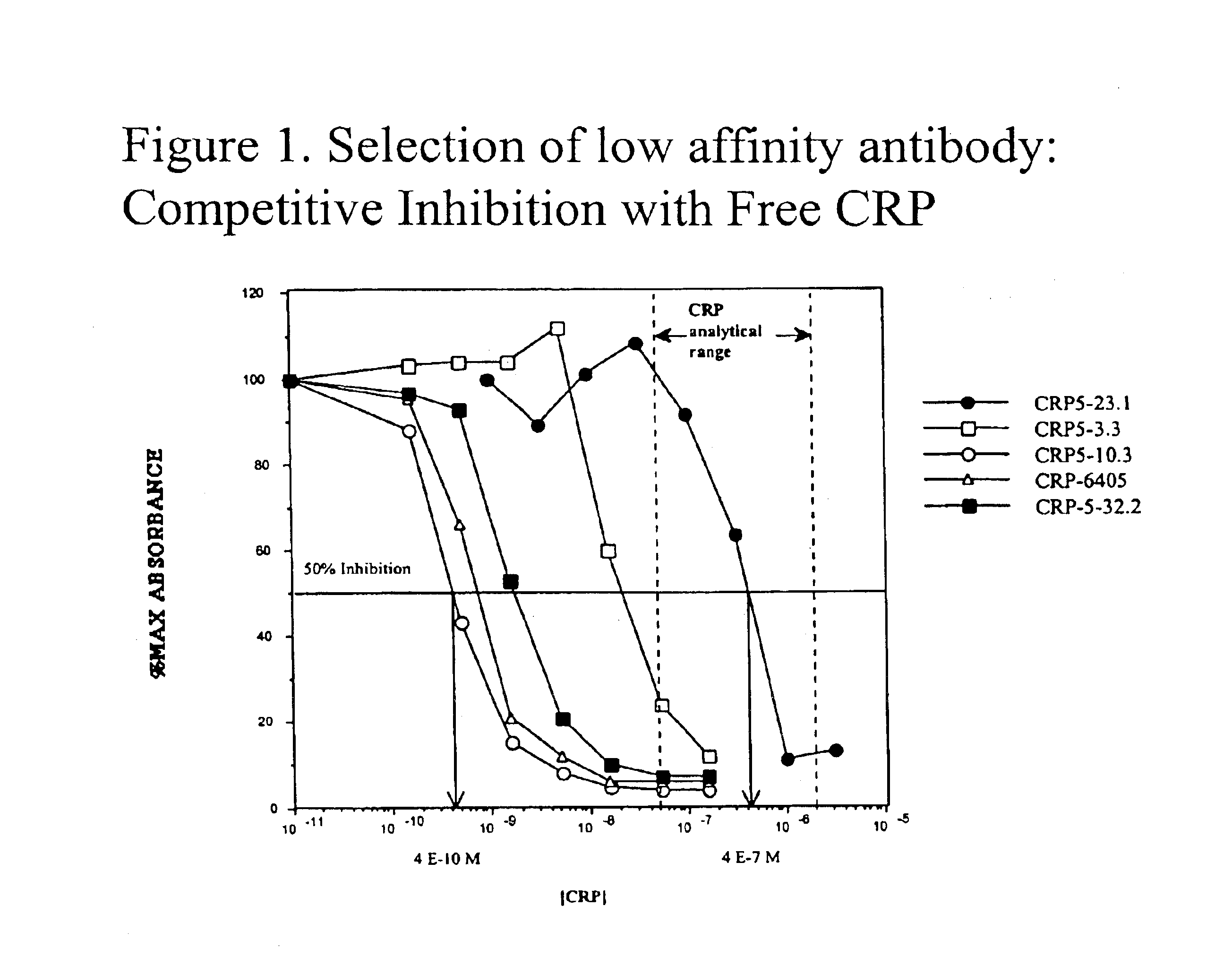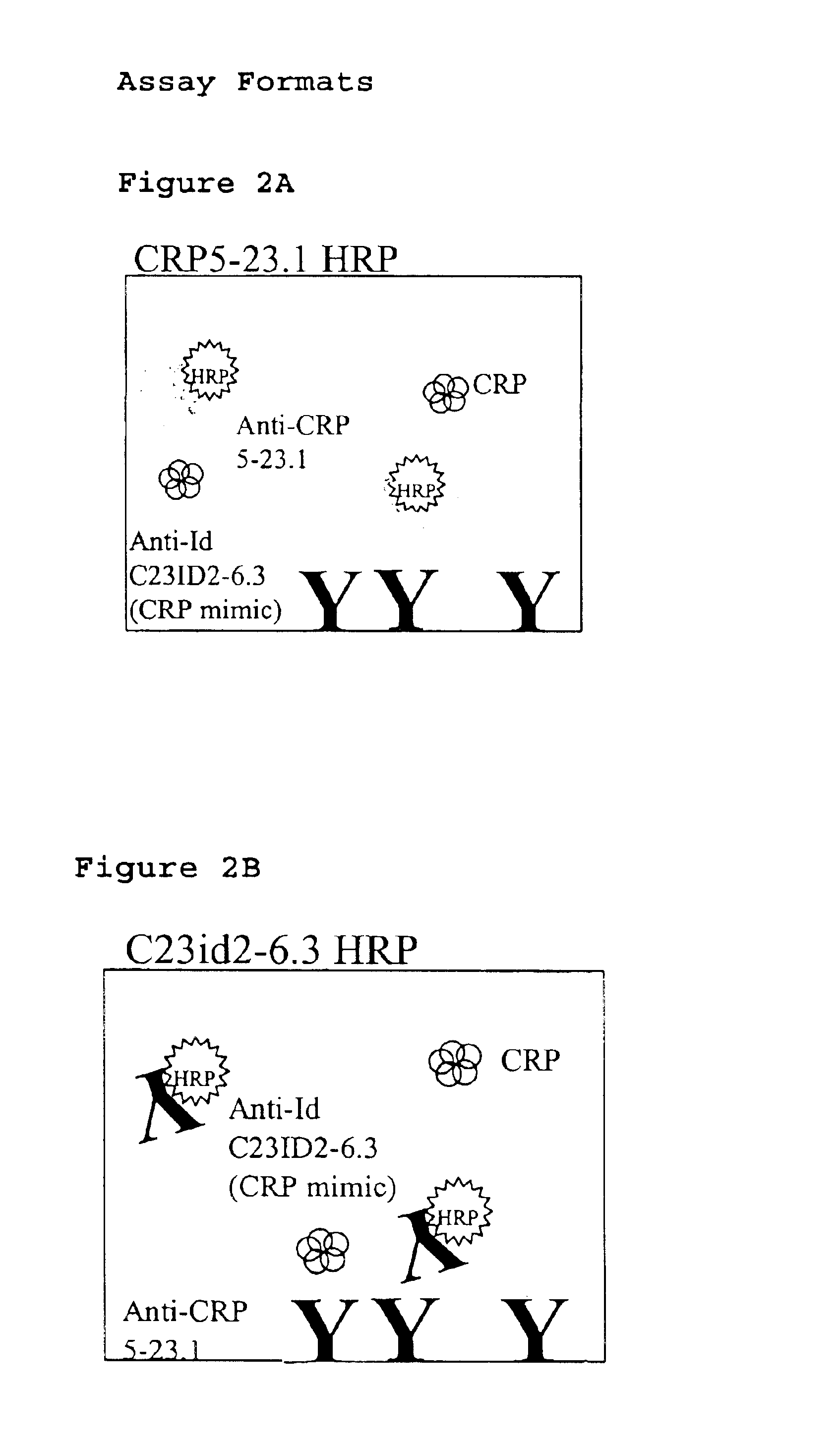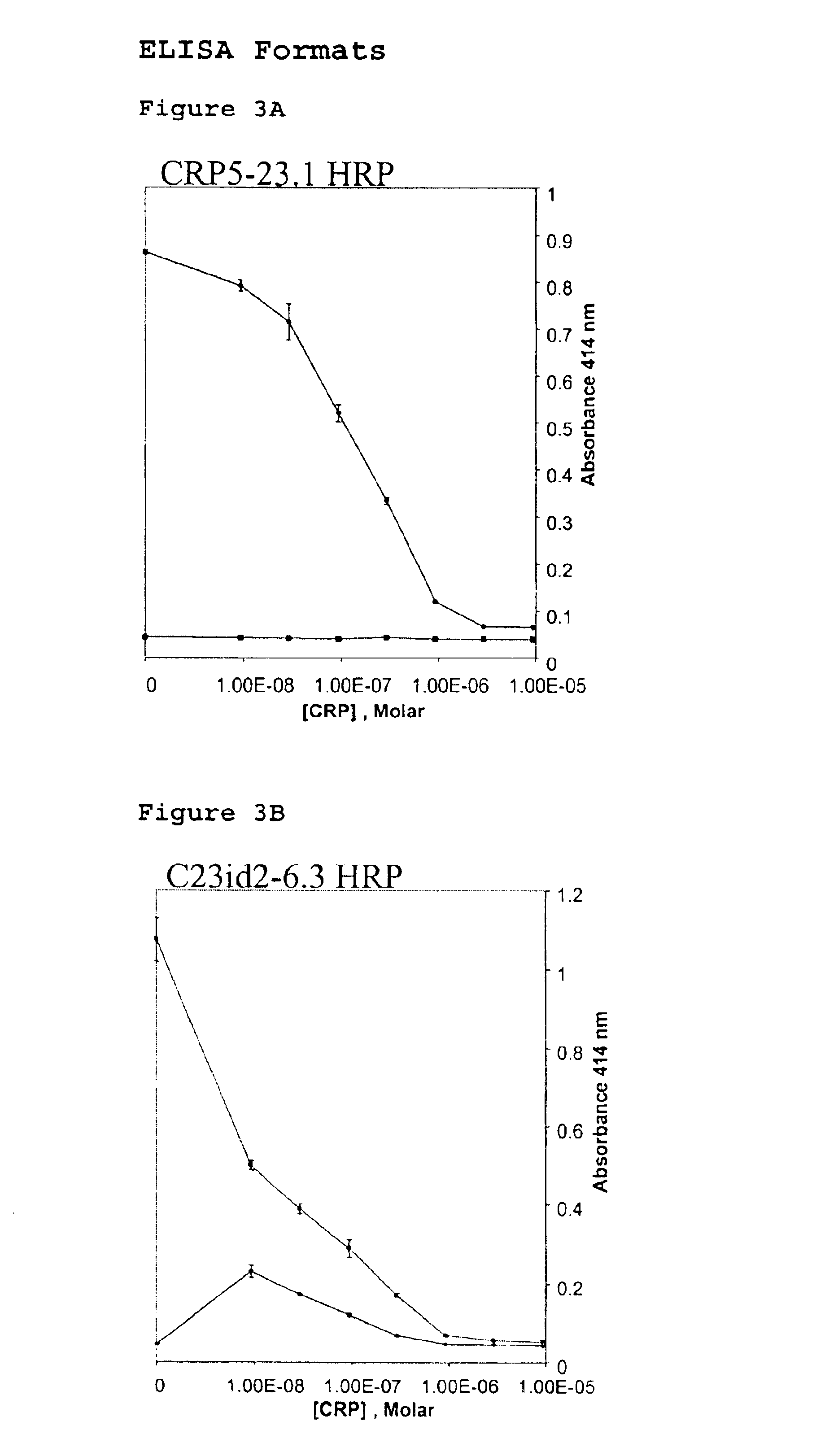Immunoassay for C-reactive protein
a technology of immunoassay and creactive protein, which is applied in the field of in vitro diagnostic immunoassay for detecting creactive protein, can solve the problems of difficult operation of high molecular weight analytes on widely used clinical chemistry analyzers, difficult to translate immunoassays into automated systems, and difficulty in detecting creactive protein,
- Summary
- Abstract
- Description
- Claims
- Application Information
AI Technical Summary
Benefits of technology
Problems solved by technology
Method used
Image
Examples
example 1
[0029]Preparation of a low affinity antiCRP monoclonal antibody.
[0030]The concentration range of C-reactive protein found in human serum runs from a normal value of less than 5 mg / L (40 nM) to greater than 300 mg / L (2.6 μM). To devise a suitable competitive immunoassay for CRP required a monoclonal antibody having a Kd for CRP within the same concentration range, that is, between 40 nM and 2.6 μM. Monoclonal antibodies to CRP were generated following immunization of CAF1 mice with CRP-Limulus Hemocyanin conjugates and screened for binding to CRP by ELISA. Resulting CRP reactive cultures were cloned and their secreted antibodies measured for affinity to CRP using a competitive ELISA technique. The antibody cultures were initially titered on a CRP ELISA plate to determine the concentration at which the maximal absorbence value reaches a plateau. The minimal concentration at which the plateau maximal absorbence occurs was used in a competitive ELISA to assure that the antibody concentr...
example 2
[0031]Preparation of an antiidiotypic antibody to CRP5-23.
[0032]CAF1 mice were immunized with CRP5-23 antibody conjugated to Limulus hemocyanin. The mice were sacrificed and splenocytes obtained from the immunized mice were fused with SP2 / 0-Ag14 myeloma cells. The resulting hybridomas were initially screened by conventional ELISA for the secretion of antibody that bound to immobilized Fab fragments prepared from CRP5-23. This screen defined a population of antibodies with nominal reactivity for the CRP5-23 Fab fragment.
[0033]Further selection was performed to identify those antibodies with properties essential for competitive immunoassay. The criteria used for selecting a suitable antiidiotypic antibody were:[0034]1. it should bind to CRP5-23 with relatively high affinity (Kd−8 M), and[0035]2. its binding to CRP5-23 should be mutually exclusive with binding of the analyte, CRP.
[0036]Positive clones were rescreened using surface plasmon resonance using a Biacore instrument to measure...
example 3
[0037]Preparation of a competitive immunoassay using antiidiotypic antibodies in conventional ELISA.
[0038]Two versions of ELISA format based competitive immunoassays were developed using the anti-CRP antibody CRP5-23 and its antiidiotype C23id2-6.3 along with their HRP conjugated partners. The two ELISA formats are illustrated in FIGS. 2A and 2B and the corresponding dose-response curves for CRP are presented in FIGS. 3A and 3B. As depicted in FIG. 2A, format 1 consists of the antiidiotypic antibody immobilized onto the plate surface and the HRP-labeled anti-CRP antibody competes with soluble CRP for sites on the immobilized antiidiotypic antibody. Format 2 in FIG. 2B uses the opposite orientation of reagents wherein the anti-CRP antibody is immobilized while the HRP-labeled antiidiotypic antibody and CRP in solution compete for antiCRP sites on the plate. Standard ELISA procedures were followed to immobilize antibody, block non-specific sites, titer labels, and for signal generatio...
PUM
| Property | Measurement | Unit |
|---|---|---|
| concentration | aaaaa | aaaaa |
| concentration | aaaaa | aaaaa |
| concentrations | aaaaa | aaaaa |
Abstract
Description
Claims
Application Information
 Login to View More
Login to View More - R&D
- Intellectual Property
- Life Sciences
- Materials
- Tech Scout
- Unparalleled Data Quality
- Higher Quality Content
- 60% Fewer Hallucinations
Browse by: Latest US Patents, China's latest patents, Technical Efficacy Thesaurus, Application Domain, Technology Topic, Popular Technical Reports.
© 2025 PatSnap. All rights reserved.Legal|Privacy policy|Modern Slavery Act Transparency Statement|Sitemap|About US| Contact US: help@patsnap.com



